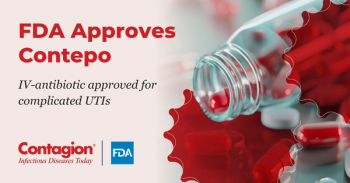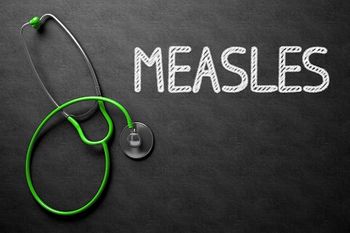
IDSA Releases New Guidelines for COVID-19 Diagnosis
The 15 diagnostic guidelines weigh the currently accepted definition of coronavirus, and consider the prevalence of regional cases in at-risk patients.
The Infectious Diseases Society of America (IDSA) has released new guidelines for diagnosing
A panel of IDSA experts, led by Kimberley E. Hanson, MD, MHS, of the University of Utah, agreed upon 15 new diagnostic recommendations for healthcare workers faced with possible SARS-CoV-2 infection in patients.
The guideline, they wrote, used a “methodologically rigorous process” to appraise current diagnostic literature and inform their testing recommendations. That said, limitations exist.
The team noted a critical issue being that current COVID-19 diagnostic guidance and literature lacks a standard COVID-19 definition. As such, the variable case definitions and classifications of the virus used in this guidance come from systematic reviews which used index testing under clinical investigation.
“Incorporation of the investigational index test into the diagnostic “gold” standard falsely inflates sensitivity and specificity estimates,” they wrote. “It is recognized that not all individuals with COVID-19 will have detectable SARS-CoV-2 nucleic acid. Therefore, a “probable” case definition is also proposed.”
A summarization of the recommendations are as follows:
- Nucleic acid amplification tests (NAAT) are recommended for symptomatic individuals who are suspected of having COVID-19, even when clinical suspicion is low.
- Nasopharyngeal, mid-turbinate (MT) or nasal swabs are suggested in suspected symptomatic individuals with upper respiratory tract infection (URTI) or influenza like illness (ILI) rather than oropharyngeal swabs or lone saliva.
- Nasal and MT swab specimens are suggested for SARS-CoV-2 RNA testing in symptomatic, suspected individuals with URTI or ILI.
- Initial upper respiratory tract samples are suggested for RNA testing versus lower respiratory samples in hospitalized, suspected patients.
- A single, not-repeated viral RNA test is suggested in symptomatic individuals with a low clinical suspicion of COVID-19.
- A repeating viral RNA test is suggested when the initial test is negative in symptomatic individuals with an intermediate or high clinical suspicion of COVID-19.
- There is no recommendation for or against the use of rapid (≤1 hour) versus standard RNA testing in symptomatic, suspected individuals.
- RNA testing is suggested in asymptomatic individuals who are either known or suspected to have been exposed to COVID-19.
- RNA testing is not suggested in asymptomatic individuals with no known contact with COVID-19 who are being hospitalized in areas with low COVID-19 prevalence in the community.
- Direct RNA testing is recommended in asymptomatic individuals with no known COVID-19 contact who are being hospitalized in areas with high COVID-19 prevalence (i.e., hotspots).
- RNA testing is recommended for immunocompromised, asymptomatic individuals being admitted to the hospital, regardless of COVID-19 exposure.
- RNA testing is recommended in asymptomatic individuals before immunosuppressive procedures, versus no testing, regardless of known COVID-19 exposure.
- RNA testing is suggested for asymptomatic individuals without known COVID-19 exposure who are undergoing major, time-sensitive surgery.
- RNA testing is not suggested in asymptomatic individuals without a known COVID-19 exposure who are undergoing a time-sensitive aerosol-generating procedure when personal protective equipment (PPE) is available.
- RNA testing is suggested in asymptomatic individuals without a known COVID-19 exposure who are undergoing time-sensitive aerosol-generation procedure when PPE is limited and testing is available.
Hanson and colleagues noted that significant clinical interested has centered around the use of serologic SARS-CoV-2 tests for both diagnosis and public health surveillance. However, more data is necessary before a clinical recommendation could be made.
“Important areas that need to be addressed include assessment of the sensitivity and specificity of commercial antibody tests, determinations of protective immunity and measures of antibody responses over time,” they wrote.
Antigen detection tests, experts noted, are coming soon, and will need to be compared with NAAT. Future assessments should determine the significance of nucleic acid or antigen shedding in patients who have recovered from the virus to help define “test of cure” algorithms.
Ultimately, the experts wrote, it is the available resources of an institution that will dictate the prioritization of testing strategies.
“The critical components of future COVID-19 diagnostic studies include use of a well-defined reference standard with detailed descriptions of specimen types, collection methods and their timeframe after symptom onset or exposure to a laboratory-confirmed case,” they wrote.
Newsletter
Stay ahead of emerging infectious disease threats with expert insights and breaking research. Subscribe now to get updates delivered straight to your inbox.

































































































































































































































































































